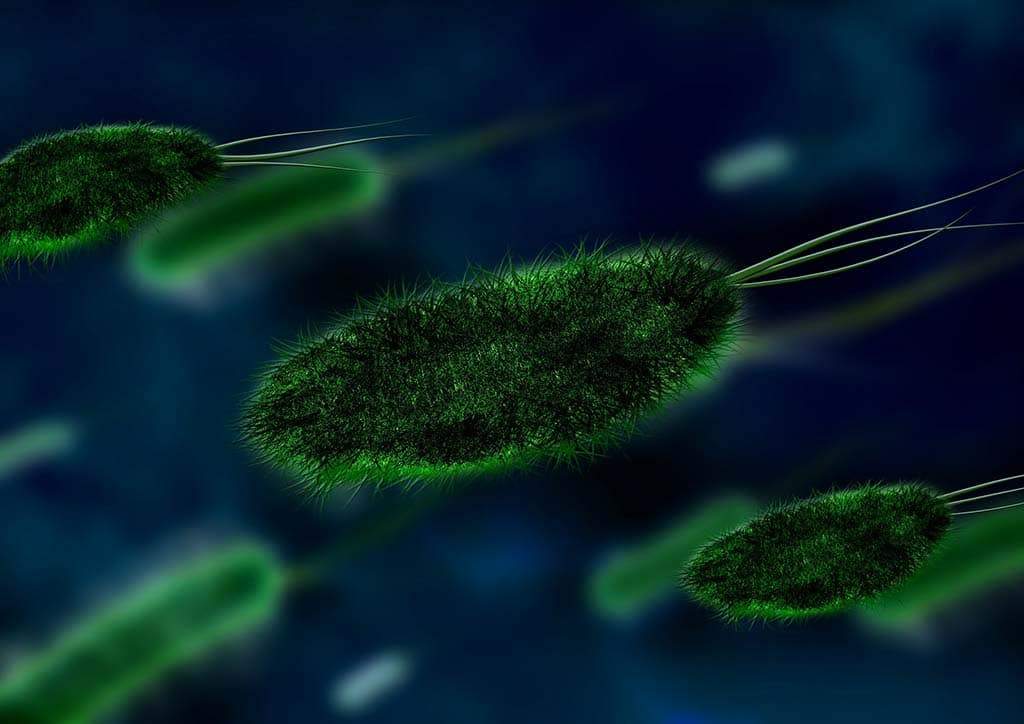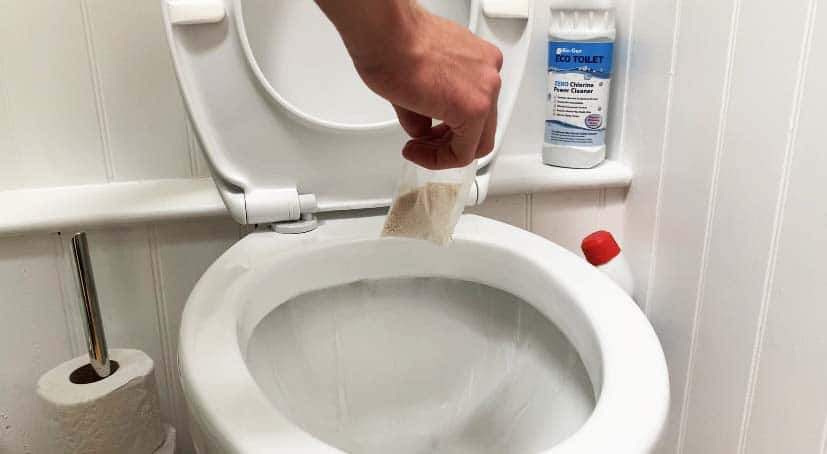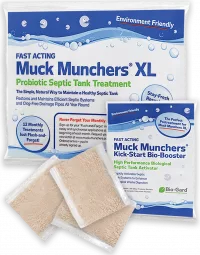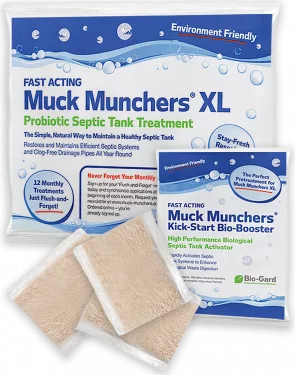Why Add Bacteria to a Septic Tank?
Let’s talk bacteria, and more specifically, Why add bacteria to a septic tank?
Chances are, you will likely have been informed over the years that, in all its shapes and forms, bacteria make for bad news. It’s true to an extent – bacteria can breed illness, and as a result, it’s always a good idea to maintain good hygiene. However, when it comes to bacteria in septic tank systems, you are going to need to keep them on your side.
- Why do you need the bacteria in your septic tank on your side?
- What is it about bacteria for septic tank systems that separates them from the germs and microbes you’d find clinging around your toilet bowl?
Wonder no more – read on, as we explain the complete lowdown: why add bacteria to a septic tank.

Why Do Septic Tanks Need a Healthy Bacterial Population?
The bottom line is, without adding bacteria, your septic tank is going to clog up and/or overflow. That’s because, essentially, your tank and its soakaway are only going to do so much. Septic tanks need bacteria and microbes to break down solids.
Liquids aren’t a problem – but healthy septic tank microbes will act on your behalf to munch through anything you flush down. Unlike a traditional sewage system, a septic tank holds your waste on-site. It doesn’t just flush through to the sewers. As such, everything you flush through will gradually degrade until it soaks through your soakaway, allowing for liquid elements to transfer away into local soil or elsewhere – healthily and safely.
So, yes – in the case of owning a septic tank on-site, bacteria are your friends. Septic tank organisms are going to be just as nasty for your health as those you’ll find in the loo, but ultimately, you’re leaving them to do their business. There’s absolutely no need for interaction otherwise!
The Benefits of adding Bacteria to Your Septic Tank
Here are a few quick reasons why adding bacteria to your tank, not just maintaining the population, matters.
- You’ll prevent the need for regular pumping. Septic tank pumping can and will cost a lot of money if you do it regularly. Eventually, all tanks need a good pump – but topping up your bacteria means the difference between a pump once every five years, and once every five months.
- You might use chemicals and cleaners that are killing off your bacteria. While it’s unavoidable to keep your toilet clean to some extent, you need to be extra careful about what you flush. More on this shortly.
- You might already be noticing bad smells from your tank, or that some waste is starting to seep through – add more bacteria to the mix.
- Adding bacteria to your tank means you don’t have to keep checking the levels. While you might need to monitor sludge occasionally, prising open the tank is a job that – trust us – you’re only going to want to do on a rare basis. Casting in a few Muck Munchers means you can pretty much leave them to work their magic.
Of course, Muck Munchers will only help you some of the way. We’ll make sure that your tank levels are kept to a healthy minimum. However, on top of investing in septic tank Muck Munchers bacteria sachets, there is more you can do to keep those waste levels shrinking.
6 Steps to Add Bacteria to a Septic Tank and Improve Efficiency
Follow these six easy steps and you’ll soon find your septic tank is fighting fit and raring to go – with a biological septic tank treatment (Muck Munchers), and a minimum of pumping jobs required.
- Always be careful with the chemicals you flush. If you’re sparing on the ammonia and chemical strands then you shouldn’t kill off too much bacteria too often. However, you’ll inspire growth if you cut back altogether. Try looking for eco-friendly cleaners, or even try cleaning the loo with some baking soda and vinegar, followed by boiling water instead.
- Fats, Oils and Greases – FOGs – are your septic tank bacteria’s worst enemies. These liquid elements will quickly solidify and create useless sludge in your tank. That means your bacteria is effectively going to bog down and even starve to death. NEVER flush FOGs where you can help it. Contact your local council for efficient and safe ways to dispose of these liquids.
- Spread out your water usage. The more water you pump into your tank, the harder your septic tank organisms are going to take it. Try and spread out the water you use across the day, and across the week. Flush a few times a day if you have to, but never in quick succession. The same applies to running the washing machine.
- Remember the 3Ps – Pee, Poop and Paper. Ideally, you should only ever be flushing the 3Ps down your septic system. Yes, that means your toilet wipes need to go in the bin, NOT the toilet. Just as they clog up sewers, they clog up your tank, and your soakaway, too.
Anything outside of the 3Ps – so sanitary products, thick paper, food and otherwise – needs to be disposed of elsewhere. Otherwise, your tank clogs up, and your bacteria dies off.

The Difference Between Aerobic and Anaerobic Bacteria
Yes, there are different types of bacteria, too! The main difference between aerobic and anaerobic bacteria is the need for oxygen.
- Aerobic bacteria need oxygen to survive. It’s this bacteria you will normally find in home septic tank systems. They are the most resistant against household waste and cleaners, as well as being the best at breaking down human solids.
- Anaerobic bacteria are normally used in larger-scale, underground systems. They don’t need oxygen, which means they tend to be better at breaking down unnatural substances. Unlike aerobic bacteria, these microbes won’t be fazed by stuff outside of the 3Ps.
What Kills Bacteria in a Septic Tank?
The bacteria in your septic tank are very sensitive. Their number one killers are chemicals and cleaners, especially those formulated with bleach and/or ammonia.
However, too much flushing, as well as inorganic matter, can also choke your bacteria. Again, fats, oils and greases (FOGs) are also big nemeses of your tank microbes. As you will likely be hosting aerobic bacteria, you need to keep in mind that they love natural waste.
The Importance of Septic System Care?
Your septic system is likely to be one of the most complex fixtures you have at home. It might seem like just an everyday tank, but it is designed to carefully and safely dispose of potentially harmful waste. It’s also dependent on a very fragile ecosystem.
Failure to look after your septic tank means you’re going to potentially cause bad smells, leakage of sewage, and grind your drainage to a halt. That’s going to give you plenty of headaches, and what’s more, it’s going to mean your neighbours have something to say, as well as the local council.
Keep in mind, too, that the more you leave your tank to fester, the sooner you will need a pump out. These are expensive, and apart from the pumps you’ll likely arrange once every five years, completely avoidable.
Do You Need to Look After Your Septic Tank and Soakaway Too?
Your septic tank it’s the only piece of the puzzle you should be looking after. Your soakaway is just as important, as it helps to slowly, and safely, get rid of wastewater and liquid into the ground.
Let this clog up, and of course, you’re looking at your wastewater going nowhere. Bio-active septic tank treatments from Muck Munchers, however, are formulated to look after the bacteria in your system from the chamber tops to the soakaway.
Again, it’s easy to think that your septic tank is just a big receptacle in the back garden. It’s much more complex – and it demands your respect!
The Best Septic Treatment for Septic Tanks
No matter your type of septic tank – whether it’s a traditional unit, onion-shaped, or a modern package sewage plant, the best septic treatment for your system is a bacteria top-up.
Muck Munchers provides biological septic tank treatments – or, bacteria for septic tanks – that will help to keep the sludge down and your waste moving down and out of the soakaway. Without bacteria, the waste you pump into your septic tank or system is going nowhere fast.
Septic tank care bacteria from Muck Munchers are a little different from what you’d expect, in that they have been formulated and arranged to munch down on waste specifically heading through your wastewater pipes. These little beasts are going to make light work of your waste, and providing you do your part inside the home, you can be sure to rely on them for years to come – with regular top-ups, of course!










